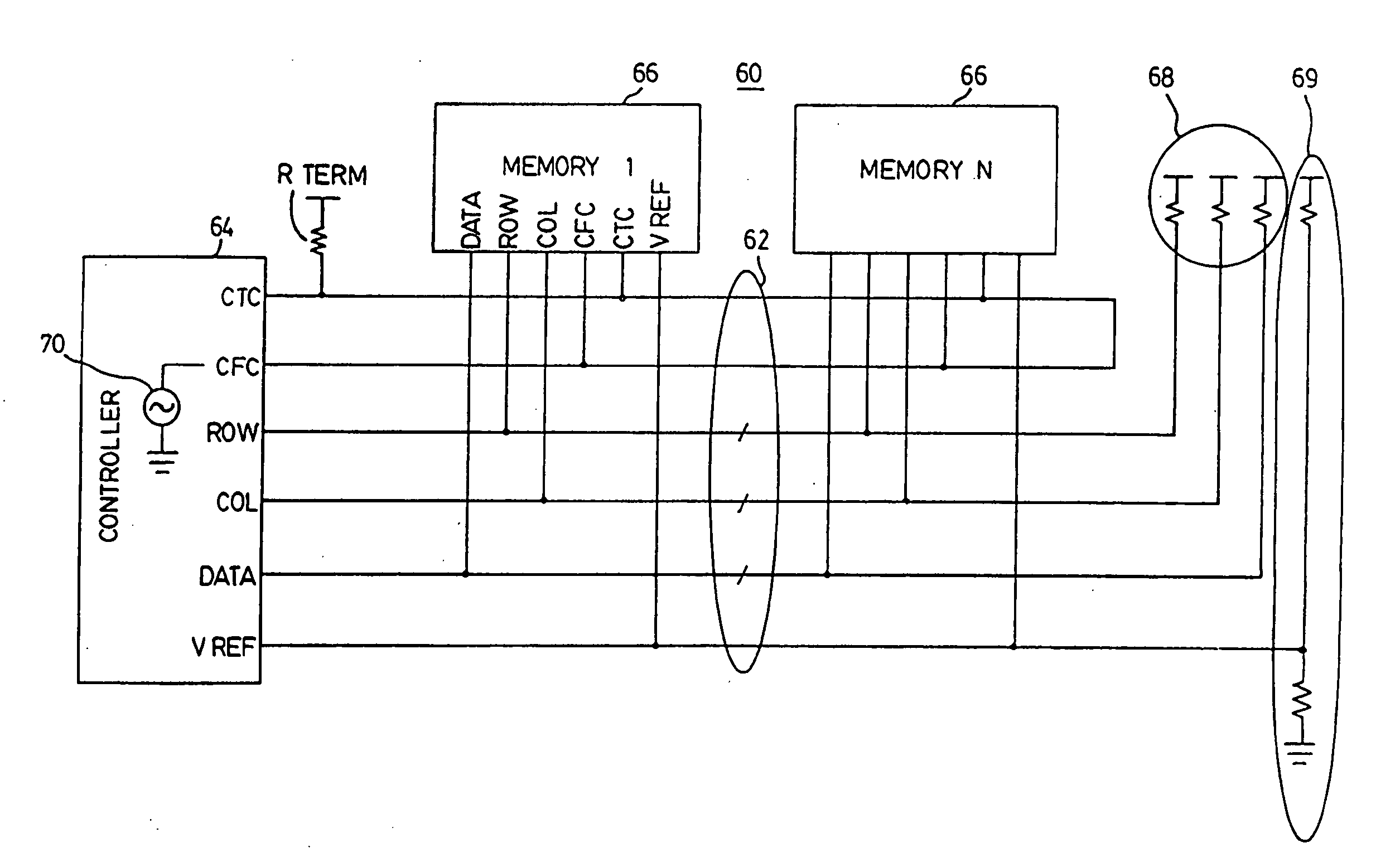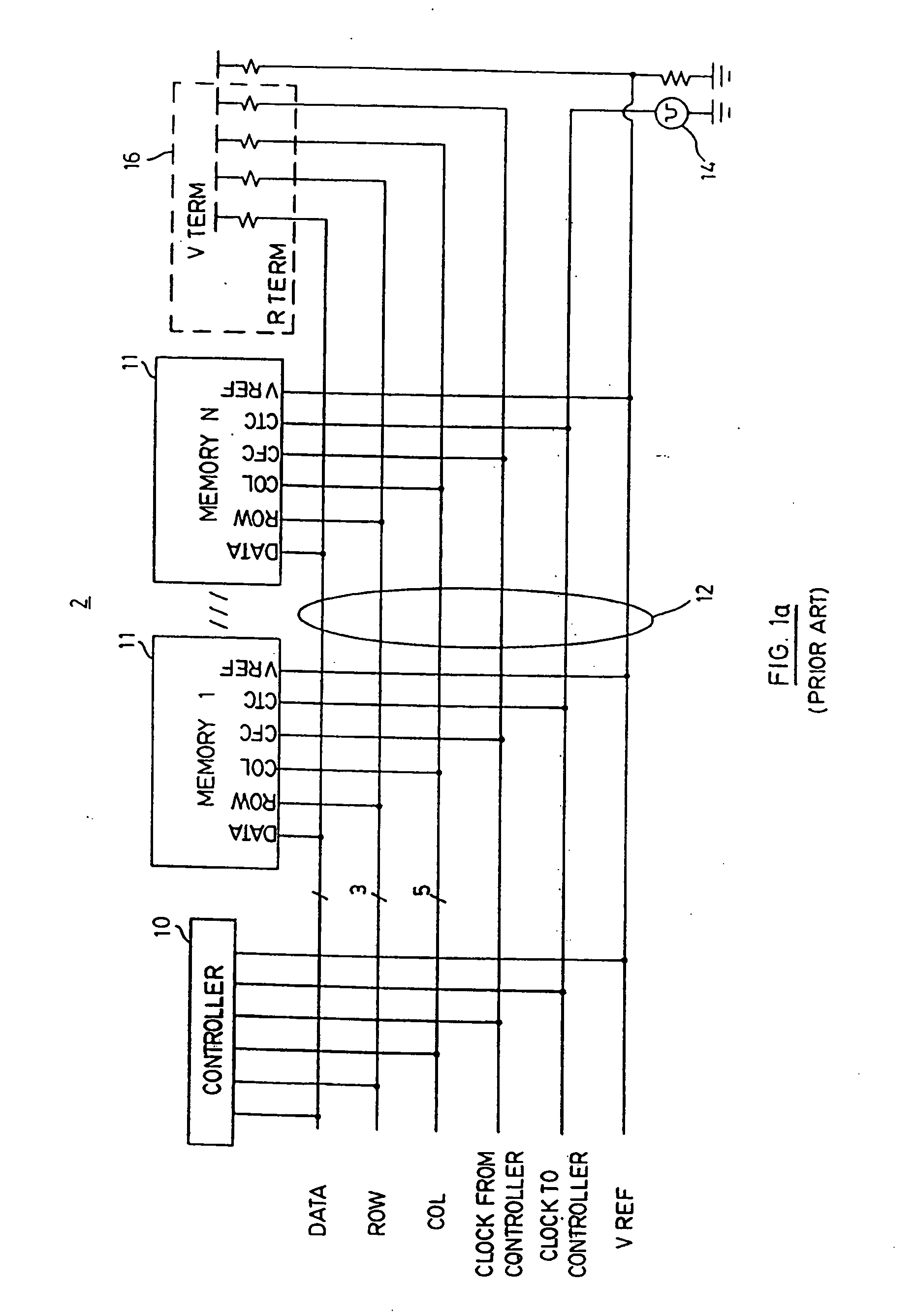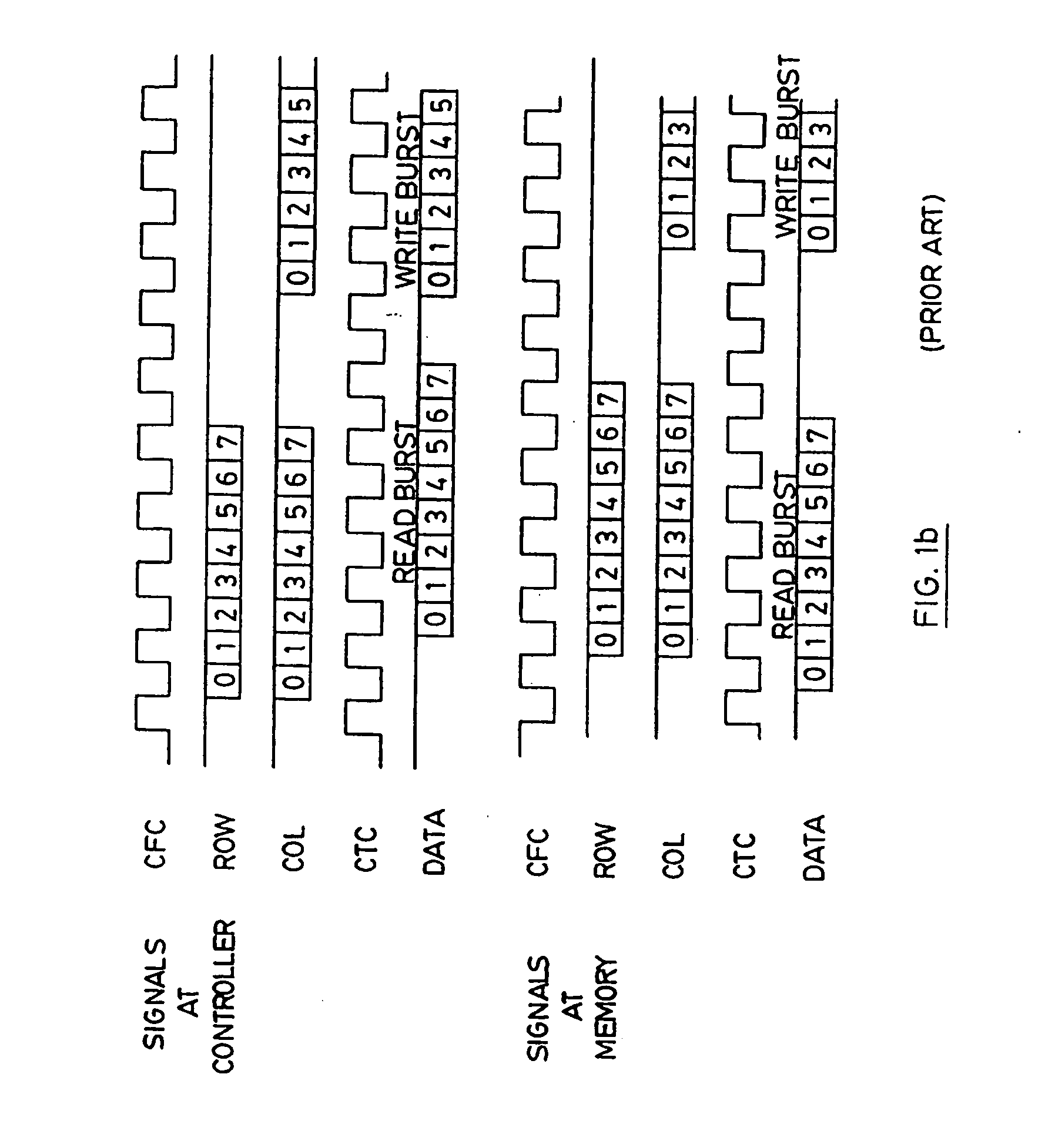High bandwidth memory interface
- Summary
- Abstract
- Description
- Claims
- Application Information
AI Technical Summary
Benefits of technology
Problems solved by technology
Method used
Image
Examples
Embodiment Construction
[0070] Referring to FIG. 1(a) a general prior art architecture on which the present memory subsystem is based is indicated by numeral 2 and is described in greater detail in R. Crisp “Direct Rambus Technology: The New Main Memory Standard”, IEEE Micro, November / December 1997, p.18-28, incorporated herein by reference. The memory subsystem 2 includes a main bus or channel 12 which consists of a plurality of high speed controlled impedance matched transmission lines, a controller 10 and at least one memory device 11 connected thereto in parallel. The channel 12 has a bus topology with the controller 10 at one end, terminators 16 at the other end and memory devices II in-between. The transmission lines include a ClockToController line; a ClockFromController line; a data bus; a row bus and column bus each carrying correspondingly named signals. These signals are terminated at their characteristic impedance Rterm at the far end of the channel.
[0071] The terminators pull the signals up t...
PUM
 Login to View More
Login to View More Abstract
Description
Claims
Application Information
 Login to View More
Login to View More - R&D
- Intellectual Property
- Life Sciences
- Materials
- Tech Scout
- Unparalleled Data Quality
- Higher Quality Content
- 60% Fewer Hallucinations
Browse by: Latest US Patents, China's latest patents, Technical Efficacy Thesaurus, Application Domain, Technology Topic, Popular Technical Reports.
© 2025 PatSnap. All rights reserved.Legal|Privacy policy|Modern Slavery Act Transparency Statement|Sitemap|About US| Contact US: help@patsnap.com



